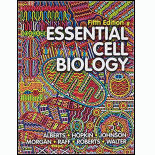
Concept explainers
A.
To distinguish: Between gene and allele.
Concept introduction: Genes are the DNA sequences that can control a particular trait. Alleles are the different forms of a particular gene, and they can occur in pairs. They can be classified into dominant or recessive and homozygous or heterozygous. Homozygous organisms carry two copies of the identical allele, while heterozygous organisms carry two dissimilar alleles in one copy. Genotype is the total genetic composition of an individual, while
B.
To distinguish: Between homozygous and heterozygous.
Concept introduction: Genes are the DNA sequences that can control a particular trait. Alleles are the different forms of a particular gene, and they can occur in pairs. They can be classified into dominant or recessive and homozygous or heterozygous. Homozygous organisms carry two copies of the identical allele, while heterozygous organisms carry two dissimilar alleles in one copy. Genotype is the total genetic composition of an individual, while phenotype is the visible characteristics of a person. Dominant is used to describe a strong gene, while recessive is used to describe a weak gene.
C.
To distinguish: Between genotype and phenotype.
Concept introduction: Genes are the DNA sequences that can control a particular trait. Alleles are the different forms of a particular gene, and they can occur in pairs. They can be classified into dominant or recessive and homozygous or heterozygous. Homozygous organisms carry two copies of the identical allele, while heterozygous organisms carry two dissimilar alleles in one copy. Genotype is the total genetic composition of an individual, while phenotype is the visible characteristics of a person. Dominant is used to describe a strong gene, while recessive is used to describe a weak gene.
D.
To distinguish: Between dominant and recessive.
Concept introduction: Genes are the DNA sequences that can control a particular trait. Alleles are the different forms of a particular gene, and they can occur in pairs. They can be classified into dominant or recessive and homozygous or heterozygous. Homozygous organisms carry two copies of the identical allele, while heterozygous organisms carry two dissimilar alleles in one copy. Genotype is the total genetic composition of an individual, while phenotype is the visible characteristics of a person. Dominant is used to describe a strong gene, while recessive is used to describe a weak gene.
Want to see the full answer?
Check out a sample textbook solution
Chapter 19 Solutions
Essential Cell Biology 5e
 Human Anatomy & Physiology (11th Edition)BiologyISBN:9780134580999Author:Elaine N. Marieb, Katja N. HoehnPublisher:PEARSON
Human Anatomy & Physiology (11th Edition)BiologyISBN:9780134580999Author:Elaine N. Marieb, Katja N. HoehnPublisher:PEARSON Biology 2eBiologyISBN:9781947172517Author:Matthew Douglas, Jung Choi, Mary Ann ClarkPublisher:OpenStax
Biology 2eBiologyISBN:9781947172517Author:Matthew Douglas, Jung Choi, Mary Ann ClarkPublisher:OpenStax Anatomy & PhysiologyBiologyISBN:9781259398629Author:McKinley, Michael P., O'loughlin, Valerie Dean, Bidle, Theresa StouterPublisher:Mcgraw Hill Education,
Anatomy & PhysiologyBiologyISBN:9781259398629Author:McKinley, Michael P., O'loughlin, Valerie Dean, Bidle, Theresa StouterPublisher:Mcgraw Hill Education, Molecular Biology of the Cell (Sixth Edition)BiologyISBN:9780815344322Author:Bruce Alberts, Alexander D. Johnson, Julian Lewis, David Morgan, Martin Raff, Keith Roberts, Peter WalterPublisher:W. W. Norton & Company
Molecular Biology of the Cell (Sixth Edition)BiologyISBN:9780815344322Author:Bruce Alberts, Alexander D. Johnson, Julian Lewis, David Morgan, Martin Raff, Keith Roberts, Peter WalterPublisher:W. W. Norton & Company Laboratory Manual For Human Anatomy & PhysiologyBiologyISBN:9781260159363Author:Martin, Terry R., Prentice-craver, CynthiaPublisher:McGraw-Hill Publishing Co.
Laboratory Manual For Human Anatomy & PhysiologyBiologyISBN:9781260159363Author:Martin, Terry R., Prentice-craver, CynthiaPublisher:McGraw-Hill Publishing Co. Inquiry Into Life (16th Edition)BiologyISBN:9781260231700Author:Sylvia S. Mader, Michael WindelspechtPublisher:McGraw Hill Education
Inquiry Into Life (16th Edition)BiologyISBN:9781260231700Author:Sylvia S. Mader, Michael WindelspechtPublisher:McGraw Hill Education





